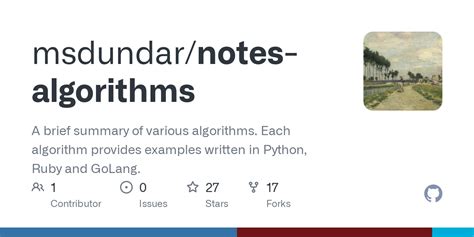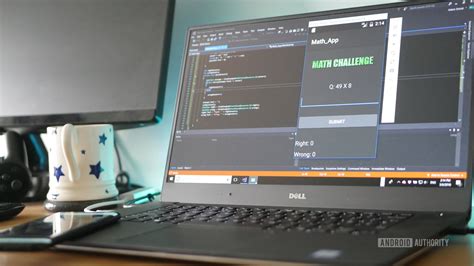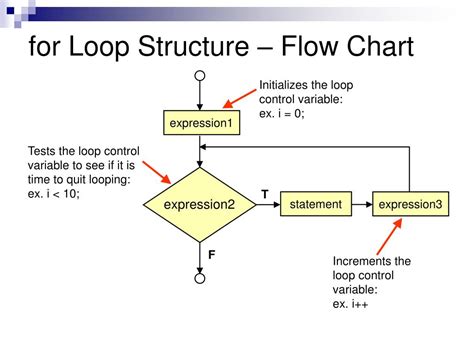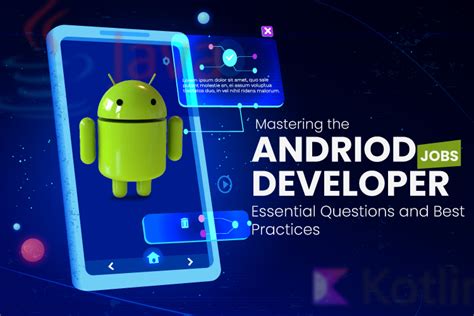In today's rapidly evolving tech landscape, the demand for innovative and efficient mobile applications and games continues to soar. As developers, we constantly seek new tools and programming languages to bring our ideas to life and captivate our users. One such language that has been gaining momentum in the mobile development arena is Golang.
Golang, also known as Go, is a powerful and versatile programming language that offers a unique blend of simplicity and performance. With its efficient concurrency model, robust standard library, and support for various platforms, Golang has become a preferred choice for developers aiming to create cutting-edge applications and games for both Android and iOS.
By harnessing the power of Golang, developers can unlock a world of possibilities in mobile app and game development. Whether you're a seasoned developer looking for a fresh approach or a beginner eager to dive into mobile development, Golang opens doors to explore new horizons and challenge the status quo.
In this article, we will delve into the exciting world of creating mobile apps and games using Golang. We will explore the benefits and advantages of Golang for mobile development, discuss the unique features and capabilities it brings to the table, and showcase some real-world examples of successful applications and games built with Golang. So, buckle up and get ready to embark on a journey where creativity meets efficiency, and innovation meets simplicity.
A Brief Overview of Golang

In this section, we will provide a concise introduction to the Golang programming language, exploring its key features and functionalities. Golang, also known as Go, is a modern and efficient programming language that offers a wide range of capabilities for developing software applications. It is versatile and cross-platform, allowing developers to create applications and games for various platforms, including Android and iOS.
Golang prides itself on its simplicity and readability, making it easier for developers to write clean and maintainable code. It incorporates a strong static typing system, which helps in catching errors at compile time and ensures robustness in code. Additionally, Golang supports concurrency through its lightweight goroutines, enabling developers to write concurrent programs with ease.
Golang provides a rich standard library that offers comprehensive support for common tasks, such as networking, file handling, and cryptographic operations. It also includes built-in features for efficient memory management, garbage collection, and excellent performance optimization, making it a preferred choice for building high-quality applications.
The language's modular approach allows for easy code reuse and collaboration between developers. Golang's package management system, known as Go Modules, enables seamless dependency management and ensures the stability and reproducibility of projects. With its focus on simplicity and standardization, Golang promotes code consistency and facilitates smooth collaboration within development teams.
Overall, Golang brings a fresh perspective to the world of programming languages, combining performance, simplicity, and scalability. Whether you are a beginner or an experienced developer, Golang offers a powerful toolkit for building innovative and efficient Android and iOS applications and games.
Setting Up the Development Environment
Creating a robust and dynamic mobile application or game requires a well-configured development environment. This section discusses the necessary steps to set up an efficient environment for creating outstanding Android and iOS apps and games using Golang.
- Install Golang: Begin by installing the latest version of Golang on your development machine. Golang, also known as Go, is a powerful programming language that provides excellent support for concurrent programming and efficient memory management.
- Choose an Integrated Development Environment (IDE): Selecting the right IDE is crucial for a seamless development experience. There are several popular IDEs available for Golang development, such as Visual Studio Code, GoLand, and IntelliJ IDEA.
- Configure the IDE: Once you have chosen your preferred IDE, ensure that you configure it correctly for Golang development. This includes setting up the necessary plugins and tools, configuring the build system, and enabling relevant code completion and syntax highlighting features.
- Install the Mobile SDKs: To develop Android and iOS apps and games, you will need to install the respective Software Development Kits (SDKs). Follow the official documentation provided by Google and Apple to download and install the Android SDK and Xcode.
- Set Up Virtual Devices: To test your applications on different Android and iOS devices, you need to set up virtual devices. Android Studio and Xcode offer emulators and simulators that allow you to emulate different device configurations.
- Install Additional Libraries and Frameworks: Depending on your project requirements, you may need to install additional libraries and frameworks. Common examples include networking libraries, graphics libraries, and game engines.
By following these steps and configuring your development environment properly, you will be well-prepared to start building Android and iOS apps and games using Golang. The next sections will dive into the specifics of creating engaging and feature-rich applications and games for mobile platforms.
Setting Up the Golang Software Development Kit (SDK)

One of the initial steps in starting to create apps and games for Android and iOS using Golang is to install the Golang Software Development Kit (SDK) on your development environment. This section will guide you through the process of setting up the Golang SDK, enabling you to begin building powerful and efficient applications.
Choosing the IDE
In the world of developing applications and games for mobile platforms, one crucial decision is selecting the right Integrated Development Environment (IDE). The IDE serves as a powerful tool that simplifies the development process, offering various features and functionalities to improve productivity. This section explores the factors to consider when choosing an IDE for creating Android and iOS apps and games with Golang.
| Factor | Synonyms |
|---|---|
| Platform Compatibility | Operating System Support |
| Code Editor | Source Code Editor |
| Debugging Tools | Debugger Functionality |
| Plugin Ecosystem | Extension Support |
| Intuitive Interface | User-Friendly Design |
| Community Support | Developer Community Assistance |
| Performance Optimization | Efficiency Improvement |
| Deployment Options | Publishing Alternatives |
Platform compatibility is essential as it determines whether the IDE is compatible with the operating system on which the developer is working. A robust code editor provides a smooth coding experience, enabling developers to write clean and efficient code. Debugging tools play a critical role in the development process by allowing developers to identify and fix issues in their code. The availability of plugins or extensions expands the capabilities of the IDE, providing additional functionalities and customizability.
An intuitive interface is crucial for user satisfaction, as a well-designed and user-friendly IDE enhances productivity and reduces the learning curve. Community support is important as it facilitates knowledge sharing and problem-solving within the developer community. Performance optimization features help optimize the code and improve the efficiency of the resulting applications and games.
Lastly, considering the deployment options offered by the IDE is crucial, as it determines how easily developers can publish their Android and iOS apps and games to their respective app stores or distribution platforms.
Understanding the Fundamentals of Golang

In this section, we will delve into the core principles and concepts of Golang, a versatile programming language widely used for creating apps and games. By gaining a clear understanding of the basics, you will be well-equipped to embark on your journey of developing efficient and powerful applications for various platforms.
Simplicity and Readability
- Discover how Golang focuses on simplicity, enabling developers to write clear and concise code.
- Explore the importance of readability in Golang, making it easier for teams to collaborate and maintain codebases.
- Understand how Golang's syntax and language features contribute to its simplicity and readability.
Concurrency and Goroutines
- Learn about Golang's built-in support for concurrent programming and how it enables efficient utilization of system resources.
- Explore the concept of goroutines, lightweight threads that allow for concurrent execution of tasks.
- Discover the power of channels, Golang's mechanism for safe communication between goroutines.
Type System and Memory Management
- Understand Golang's strong and static typing system, which provides compile-time safety and helps catch errors early in the development process.
- Explore the benefits of Golang's garbage collection mechanism, which automates memory management and eliminates the need for manual memory deallocation.
- Learn about Golang's support for pointers and structured data types, allowing for efficient manipulation of complex data structures.
Standard Library and Packages
- Get acquainted with the extensive standard library that comes bundled with Golang, offering a wide range of functionality for various purposes.
- Discover how Golang's package management system facilitates modular development and code reuse.
- Explore popular third-party packages and libraries that enhance Golang's capabilities for app and game development.
By comprehending the fundamentals of Golang, you will gain a solid foundation to dive deeper into the creation of Android and iOS apps and games. With its simplicity, concurrency support, well-designed type system, and extensive standard library, Golang presents a powerful toolset for building robust and scalable software solutions.
Data Types and Variables
In the realm of software development, a fundamental concept that plays a crucial role in building Android and iOS apps and games using Golang is the understanding of data types and variables. Data types serve as the building blocks for organizing and manipulating information, acting as containers that store and represent different kinds of data.
Variables, on the other hand, provide a means to name and refer to these data types, allowing developers to store and retrieve values within their programs. They serve as placeholders that hold specific data types and can be modified or reassigned as needed during the course of execution.
When working with data types and variables, it is essential to have a clear understanding of the precise type of data you are dealing with. Golang provides several intrinsic data types, including numbers (integers, floats), strings, booleans, and more. Each data type has specific characteristics and behaviors, which inform how it can be used, stored, and manipulated within a program.
Furthermore, variables offer flexibility within a program, enabling developers to store and manipulate values dynamically. Variables can hold different data types throughout their lifespan, adapting to changing requirements and ensuring the efficient utilization of system resources.
To emphasize the importance of choosing appropriate data types and naming variables, let's consider the scenario of building an Android or iOS game using Golang. In this context, efficient memory management and performance optimization are critical, as games often require rapid data processing and real-time interactions. Engaging game mechanics heavily rely on precise data representation and efficient variable management, driving the need for robust understanding of data types and variables.
In conclusion, gaining a solid grasp of data types and variables is essential when creating Android and iOS apps and games using Golang. This understanding lays the foundation for organizing and manipulating data effectively, ensuring optimal performance and smooth user experiences.
Control Structures and Loops

In the realm of programming with Golang for mobile app and game development, understanding control structures and loops is essential for effective software development. These powerful constructs allow developers to manipulate the flow of code execution and iterate through data efficiently, enabling the creation of dynamic and interactive applications.
Control structures provide the ability to make decisions and execute code selectively based on conditions. Through the use of conditional statements such as if, else if, and else, developers can implement branching logic that guides the program's behavior. Additionally, switch statements offer a concise way to handle multiple conditions by evaluating expressions and performing different actions based on the results.
Loops, on the other hand, allow developers to perform repetitive tasks and iterate over collections of data. The for loop is a versatile construct used to execute a block of code repeatedly, either for a fixed number of iterations or until a specific condition is met. Through the use of loop control statements like break and continue, developers have fine-grained control over the loop's behavior, allowing them to exit the loop prematurely or skip certain iterations.
By mastering control structures and loops in Golang, mobile app and game developers gain the ability to dynamically respond to user input, handle complex decision-making processes, and efficiently process large amounts of data. These fundamental constructs are the building blocks for creating robust and interactive applications for both Android and iOS platforms, empowering developers to bring their creative visions to life.
Building Versatile Applications for Android Using Golang
In this section, we will explore the process of developing powerful and flexible applications for the Android platform by leveraging the capabilities of Golang. By utilizing the robust features of Golang, developers can create innovative and efficient applications that cater to a wide range of user needs and requirements.
We will delve into the various aspects of building Android apps with Golang, focusing on the key components and techniques that enable developers to deliver high-quality and seamless experiences. From designing user interfaces to implementing complex functionalities, we will explore the fundamental aspects of creating versatile Android applications.
Throughout this section, we will highlight the versatility and adaptability of Golang for Android app development. We will discuss how Golang's concurrency model, efficient memory management, and extensive standard library provide developers with a solid foundation to create performant and reliable applications.
Additionally, we will touch upon the aspect of cross-platform development, highlighting the potential benefits of using Golang to build applications that can run seamlessly on different platforms and devices. By utilizing Golang's platform-agnostic nature, developers can maximize code reusability and streamline the development process.
In conclusion, this section aims to provide insights into the process of building innovative and versatile Android applications using Golang. By harnessing the power of Golang's features and the flexibility of the Android platform, developers can create robust and efficient applications that cater to the diverse needs of users.
Exploring Gomobile for Android Development

In this section, we will delve into utilizing the power of Gomobile, a powerful tool for developing Android applications. By leveraging Gomobile, developers can harness the capabilities of the Go programming language in creating robust and efficient mobile applications for the Android platform.
Gomobile offers a seamless way to bridge the gap between Go and Android, providing a convenient interface for developing native Android apps using Go. With Gomobile, developers can tap into the vast array of libraries and packages available in the Go ecosystem and integrate them into their Android projects, enabling faster development cycles and enhanced productivity.
One of the key advantages of using Gomobile for Android development is its ability to generate cross-platform libraries that can be easily incorporated into existing Java-based Android projects. This opens up a whole new realm of possibilities, allowing developers to leverage the strengths of both Go and Java to create innovative solutions.
| Bridging the Gap | Enhanced Productivity | Cross-Platform Integration |
| Gomobile serves as a bridge between the Go programming language and Android, empowering developers to write code in Go while seamlessly integrating it into Android applications. | By enabling developers to leverage the extensive Go ecosystem, Gomobile significantly enhances productivity by providing access to a rich set of libraries and packages. | With Gomobile, it becomes possible to combine the strengths of Go and Java by generating cross-platform libraries that can be utilized in both Go and Java-based Android projects. |
As we dive deeper into using Gomobile for Android development, we will explore the process of setting up the development environment, understanding the different components of a Gomobile project, and harnessing the power of Go to create performant and feature-rich Android applications. Stay tuned for an in-depth exploration of Gomobile's capabilities and see how it can revolutionize your Android development workflow.
Building iOS Applications using Golang
In this section, we will explore the process of developing applications for iOS using the Go programming language. Our focus will be on leveraging the power and flexibility of Golang to create high-quality and efficient iOS apps.
Golang provides developers with a unique set of features and functionalities that can be tremendously beneficial in building iOS applications. By leveraging Golang's strengths, developers can create robust and performant apps for Apple's mobile platform.
We will delve into various aspects of iOS app development with Golang, including the usage of Golang frameworks and libraries, handling UI components, managing data flow, implementing network communication, and integrating with native iOS APIs.
Additionally, we will explore how Golang's concurrent programming capabilities can be used to improve the performance and responsiveness of iOS applications. We will discuss techniques for handling multiple tasks concurrently, managing resources efficiently, and ensuring smooth user experience.
In this section, we will also cover best practices and tips for building iOS apps with Golang. We will highlight strategies for optimizing app performance, ensuring code reliability, and delivering a seamless user experience. Furthermore, we will discuss the process of testing and debugging Golang-based iOS apps, as well as deploying them to the App Store.
Overall, this section aims to equip developers with the knowledge and skills to leverage Golang's power in building innovative and efficient iOS applications. By utilizing Golang's unique features and capabilities, developers can deliver high-quality apps that meet the standards and requirements of the iOS platform.
[MOVIES] [/MOVIES] [/MOVIES_ENABLED]FAQ
Is it possible to create Android and iOS apps and games using Golang?
Yes, it is possible to create Android and iOS apps and games using Golang. Golang, also known as Go, is a programming language that provides the capability to write cross-platform applications. With the help of frameworks like Gomobile and Vugu, developers can build apps and games that can run on both Android and iOS devices.
What are the advantages of using Golang for app and game development?
There are several advantages of using Golang for app and game development. Firstly, Golang's simplicity and ease of use make it a popular choice among developers. It offers a robust standard library, which provides various functionalities to streamline the development process. Additionally, Golang's built-in concurrency support allows for efficient multi-threading, resulting in better performance. Lastly, Golang's static typing and garbage collection contribute to the overall stability and reliability of the applications.
Are there any popular apps or games built using Golang?
Yes, several popular apps and games have been built using Golang. For instance, Docker, a widely-used containerization platform, has a significant portion of its backend written in Golang. Other notable examples include Kubernetes, which is used for managing containerized applications, and Hugo, a popular static site generator. These examples demonstrate the scalability and versatility of Golang for developing diverse applications and games.




